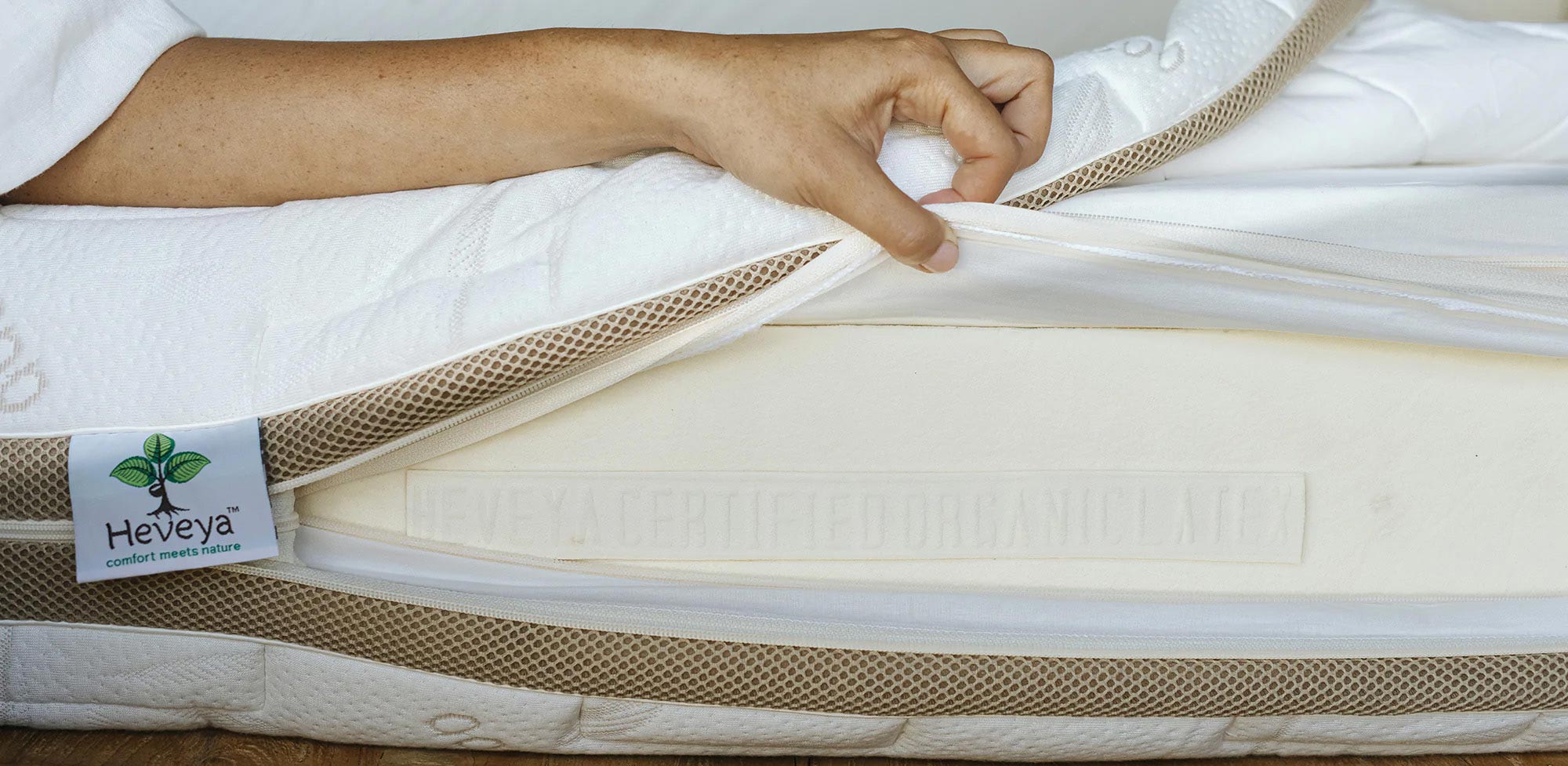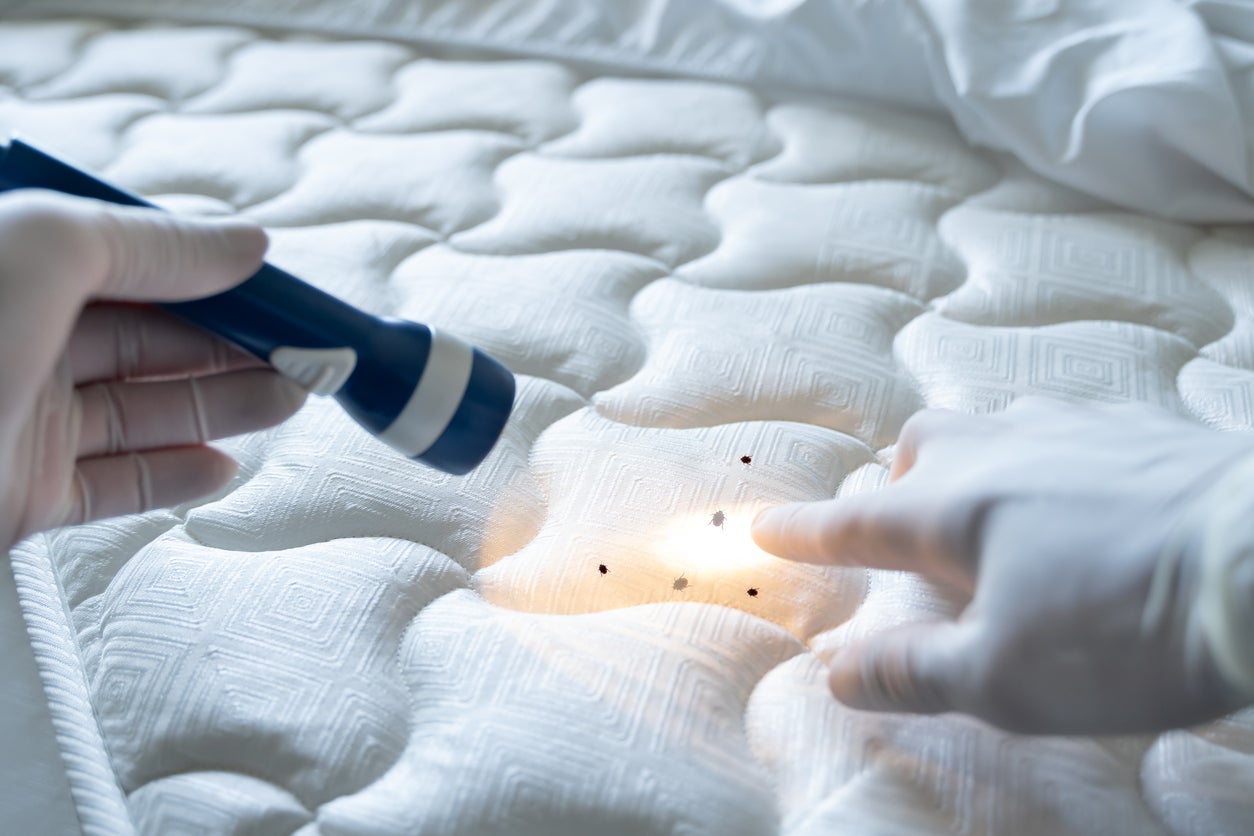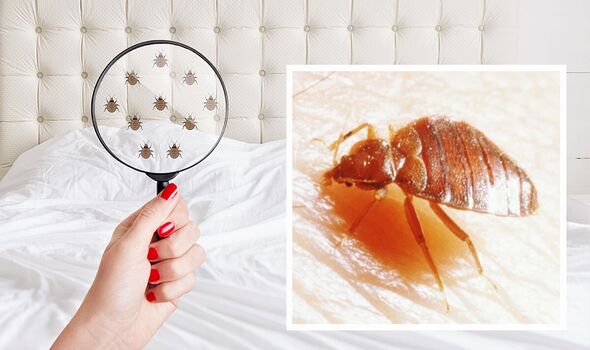To remove a bed with bed bugs, thoroughly vacuum the mattress, box spring, and bed frame, then dispose of the infested items in sealed plastic bags. Additionally, consider hiring a professional pest control service for thorough removal and treatment.
Dealing with a bed infested with bed bugs can be stressful and overwhelming. However, it’s crucial to address the issue promptly and effectively to prevent a larger infestation. In this guide, we’ll outline the necessary steps to remove a bed affected by bed bugs safely.
By following these steps, you can effectively eliminate the bed bug infestation and create a clean and healthy sleeping environment. Let’s dive into the process of removing a bed with bed bugs and the essential measures to ensure a thorough removal.
Identifying A Bed Bug Infestation
1. Red, itchy bites on skin
2. Tiny blood spots on bedding
3. Musty odors in the room
1. Check mattress seams and tufts
- Look for bed bugs or eggs
2. Inspect box springs and headboard
- Search for bed bugs or fecal spots
3. Examine bed frames and nearby furniture
- Look for live bugs or molted skins
:max_bytes(150000):strip_icc()/Bed-bug-control-tips-and-tricks-2656377-e580f433c55a4a98826e429753062084.jpg)
Credit: www.thespruce.com
Preparing The Room
To prepare the room for removing a bed with bed bugs, start by decluttering and vacuuming the area. Seal any cracks and crevices with caulk and remove any unnecessary items to reduce hiding spots. Use a bed bug mattress encasement and consider hiring professionals for safe disposal.
Clearing Clutter
Remove excess items near the bed to minimize hiding spots for bed bugs.
Sealing Cracks And Crevices
Seal any cracks in walls, baseboards, or furniture to prevent bed bugs from escaping.
Disassembling The Bed
When dealing with a bed infested with bed bugs, it is crucial to take immediate action to prevent further spread of these pesky creatures. One important step in the removal process is disassembling the bed. By doing so, you can effectively eliminate the bugs and ensure a bed bug-free sleeping environment. In this article, we will guide you through the process of disassembling your bed, starting with removing the bedding and linens.
Removing Bedding And Linens
The first step in disassembling your bed is to remove all bedding and linens. Start by stripping off the bed sheets, pillowcases, duvet covers, and any other fabric covers. Place them directly into a large plastic bag or a garbage bag, sealing it tightly to contain any bed bugs or eggs.
- Wash and Dry: Immediately take the bag to your washing machine. Use the highest temperature setting suitable for the fabric and the longest drying cycle. High heat is known to kill the bed bugs and their eggs effectively.
- Discard if Necessary: If the infested bedding is heavily infested or in poor condition, it may be best to discard it. Double-bag the items and dispose of them properly, following local waste management regulations.
- Vacuum the Bed: Before proceeding with disassembling the bed frame, vacuum the mattress, paying close attention to seams, tufts, and edges. Use an attachment with fine bristles to remove any live bugs, eggs, or droppings. Empty the vacuum immediately into a sealed bag and dispose of it accordingly.
Taking Apart The Bed Frame
Now that you have removed all bedding and linens, it’s time to dismantle the bed frame. This step is crucial as it allows you to address any hidden bed bugs or eggs that may be lurking in the crevices.
- Prepare Your Workspace: Clear the surrounding area to provide a clutter-free space for disassembling the bed frame. Lay down a protective sheet or tarp to catch any debris or bugs that may fall during the process.
- Start with the Headboard: Begin by removing the headboard. Depending on the type of bed frame you have, this may involve unscrewing bolts or screws. Place the headboard on the protective sheet, inspecting it for any signs of infestation.
- Detach the Footboard and Side Rails: Once the headboard is removed, proceed to detach the footboard and side rails. Again, carefully inspect each component for any bed bugs or eggs. If you spot any, place them in a sealed bag for disposal.
- Disassemble the Bed Slats: If your bed frame includes slats, remove them one by one. Pay close attention to the underside of each slat, as bed bugs often hide in these areas. Inspect thoroughly and discard any infested slats accordingly.
- Inspect and Treat the Frame: Finally, inspect the bed frame itself. Examine each joint, corner, or crevice for any signs of bed bug activity. If necessary, treat the frame with an appropriate bed bug spray or contact a professional pest control service for assistance.
Disassembling your bed is a crucial step in the process of eliminating bed bugs from your sleeping environment. By removing all bedding and linens and dismantling the bed frame, you can effectively address the infestation and ensure a bed bug-free sleeping space.

Credit: www.heveya.sg
Treating The Mattress And Box Spring
When it comes to removing a bed infested with bed bugs, treating the mattress and box spring is a crucial step to ensure that the infestation is properly dealt with. These steps will help to eliminate the bed bugs and reduce the risk of the infestation spreading further.
Vacuuming
Vacuuming the mattress and box spring is essential for removing bed bugs and their eggs. Use a vacuum cleaner with a high-efficiency particulate air (HEPA) filter to ensure that the bed bugs are effectively captured and contained. Vacuum all surfaces of the mattress and box spring, paying particular attention to seams, crevices, and tufts where bed bugs tend to hide.
Steam Cleaning
Steam cleaning is an effective method for eliminating bed bugs and their eggs from the mattress and box spring. Steam cleaners produce hot steam that can penetrate deep into the fabric and materials, killing the bed bugs upon contact. Ensure that the steam cleaner reaches a temperature of at least 160°F to effectively eradicate the bed bugs.
Using Mattress Encasements
Mattress encasements are specially designed covers that completely encase the mattress and box spring, preventing bed bugs from entering or escaping. These encasements are made of a durable, tightly woven fabric that is impenetrable to bed bugs. Once the mattress and box spring are encased, any remaining bed bugs and eggs inside will eventually die due to lack of access to a blood meal.
Cleaning And Treating Other Furniture
When dealing with a bed bug infestation, it is crucial to address not only the bed but also other furniture within the living space. Proper cleaning and treating of upholstered furniture, carpets, and rugs are essential to eradicate the infestation and prevent the spread of bed bugs to other areas.p
Vacuuming Upholstered Furniture
When addressing upholstered furniture, start by vacuuming thoroughly. Use a vacuum cleaner with a strong suction and a brush attachment to dislodge and eliminate bed bugs, eggs, and their debris. Pay close attention to seams, tufts, and seams where bed bugs commonly hide.
Steam Cleaning Carpets And Rugs
For carpets and rugs, steam cleaning can be an effective method to combat bed bugs. High temperatures from the steam cleaner can kill bed bugs at all stages of development, including eggs. Be sure to move the equipment slowly over the carpet, allowing the steam to penetrate deeply into the fibers.
“`Treating Bed Bug Hiding Places
When it comes to tackling a bed bug infestation, one crucial step is treating their hiding places. Bed bugs are notorious for hiding in cracks, crevices, and tiny spaces that are difficult to reach. In this section, we will discuss two effective methods for treating bed bug hiding places: using insecticides and applying diatomaceous earth.
Using Insecticides
Insecticides can be powerful allies in your battle against bed bugs. These chemical-based solutions are formulated to kill bed bugs on contact, eliminating their hiding places and preventing further infestation. When choosing an insecticide, it is important to select one that is specifically labeled for bed bug control.
Here are some important tips for effectively using insecticides:
- Read and follow the instructions on the insecticide label carefully.
- Thoroughly inspect your bed and surrounding areas for bed bug hiding spots.
- Target areas where bed bugs are likely to hide, such as mattress seams, bed frames, and cracks in walls.
- Apply the insecticide directly to these hiding places, ensuring complete coverage.
- Repeat the treatment as recommended by the manufacturer.
- Keep children and pets away from treated areas until the product has dried.
By using insecticides strategically and following proper application techniques, you can significantly reduce the bed bug population and make your bed bug eradication efforts more effective.
Applying Diatomaceous Earth
Diatomaceous earth is a natural substance that can be an excellent alternative to chemical-based insecticides. It is made from the fossilized remains of tiny aquatic organisms called diatoms. The fine powder-like substance acts as a desiccant, dehydrating and eventually killing bed bugs.
Here’s how to apply diatomaceous earth:
- Identify the areas where bed bugs are likely to hide, such as cracks, crevices, and baseboards.
- Wear gloves to protect your hands and apply a thin layer of diatomaceous earth to these areas.
- Use a brush or a paintbrush to distribute the powder evenly and ensure it reaches deep into the hiding places.
- Leave the diatomaceous earth undisturbed for a few days to allow it to work.
- Vacuum the treated areas thoroughly to remove any dead bed bugs and excess powder.
- Repeat the process as necessary until the infestation is under control.
Applying diatomaceous earth can be a safe and effective method for treating bed bug hiding places, especially for those who prefer natural solutions or have concerns about using insecticides.
Disposing Of Infested Items
When disposing of bed bug-infested items, it is crucial to follow proper protocols to prevent the spread of these pesky creatures.
Properly Bagging Bed Bug Infested Materials
Seal infested items in heavy-duty plastic bags to contain the bed bugs.
- Double bag the items for added security.
- Securely close the bags using tape or zip ties.
Arranging For Disposal
Contact your local waste disposal authorities for guidelines on discarding infested items.
- Schedule a special pickup for large furniture like mattresses.
- Inform the personnel about the infestation to ensure safe handling.
Preventing Reinfestation
Regularly Inspecting And Cleaning
Inspect your bed, bed frame, and surrounding areas regularly. Remove clutter and clean regularly.
- Vacuum thoroughly, including seams and crevices
- Wash bedding and linens in hot water
- Seal and dispose of infested items carefully
Using Bed Bug Prevention Products
Employ bed bug prevention products for proactive defense.
- Utilize mattress encasements to trap and kill bed bugs
- Apply residual insecticides as a preventive measure
- Install interception devices to capture bed bugs

Credit: www.bobvila.com
Frequently Asked Questions On How To Remove A Bed With Bed Bugs?
How Do You Identify Bed Bugs In A Bed?
To identify bed bugs, look for small, reddish-brown insects in the seams of the mattress, and check for dark spots or eggs. Additionally, watch for signs of bites on the body and a musty odor in the room.
What Are The Dangers Of Leaving Bed Bugs Untreated?
Leaving bed bugs untreated can lead to skin infections from scratching bites, insomnia from anxiety, and psychological distress. Moreover, a severe infestation can cause anemia and allergic reactions, necessitating costly professional extermination.
Can I Remove Bed Bugs From A Bed On My Own?
While it’s possible to remove bed bugs using DIY methods, professional extermination is often more effective. However, thorough cleaning, vacuuming, and using bed bug-specific products can help to eliminate and prevent re-infestation.
How Can I Prevent Bed Bugs From Returning After Removal?
To prevent bed bugs from returning, regularly wash and heat-dry linens, vacuum and steam clean carpets, and seal cracks and crevices. Additionally, use a bed bug-proof mattress encasement and inspect second-hand furniture before bringing it into your home.
Can the Same Method for Removing Bed Bugs from a Bed Work on a Leather Couch?
Yes, the same method for removing bed bugs from a bed can work on a leather couch. Vacuuming, steaming, and using insecticides can effectively remove bed bugs from a leather couch. It’s important to thoroughly inspect and treat all potential infested areas to completely eliminate the problem.
Conclusion
To sum it up, removing a bed infested with bed bugs can be a daunting task, but it is not impossible. By following the steps mentioned in this blog post and investing in professional help, you can effectively eliminate these pests from your home.
Remember to take precautionary measures to prevent future infestations. With proper knowledge and action, you can regain a bug-free and peaceful sleep environment. Keep your home clean and hygienic, and don’t hesitate to consult experts for assistance.
{ “@context”: “https://schema.org”, “@type”: “FAQPage”, “mainEntity”: [ { “@type”: “Question”, “name”: “How do you identify bed bugs in a bed?”, “acceptedAnswer”: { “@type”: “Answer”, “text”: “To identify bed bugs, look for small, reddish-brown insects in the seams of the mattress, and check for dark spots or eggs. Additionally, watch for signs of bites on the body and a musty odor in the room.” } } , { “@type”: “Question”, “name”: “What are the dangers of leaving bed bugs untreated?”, “acceptedAnswer”: { “@type”: “Answer”, “text”: “Leaving bed bugs untreated can lead to skin infections from scratching bites, insomnia from anxiety, and psychological distress. Moreover, a severe infestation can cause anemia and allergic reactions, necessitating costly professional extermination.” } } , { “@type”: “Question”, “name”: “Can I remove bed bugs from a bed on my own?”, “acceptedAnswer”: { “@type”: “Answer”, “text”: “While it’s possible to remove bed bugs using DIY methods, professional extermination is often more effective. However, thorough cleaning, vacuuming, and using bed bug-specific products can help to eliminate and prevent re-infestation.” } } , { “@type”: “Question”, “name”: “How can I prevent bed bugs from returning after removal?”, “acceptedAnswer”: { “@type”: “Answer”, “text”: “To prevent bed bugs from returning, regularly wash and heat-dry linens, vacuum and steam clean carpets, and seal cracks and crevices. Additionally, use a bed bug-proof mattress encasement and inspect second-hand furniture before bringing it into your home.” } } ] }
Related posts:

I’m MD Tanvir, and I bring years of expertise gained from working closely with pest control companies to the forefront. My journey in the industry has inspired me to launch Bug Battler, a platform aimed at equipping people with the know-how to combat pests autonomously. Through Bug Battler, I aim to empower individuals with practical insights to tackle pest infestations effectively.

